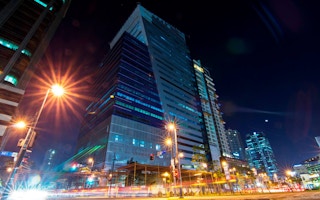Globe Telecom, the telecommunications subsidiary of Filipino conglomerate Ayala Corp, has pledged to bring down its greenhouse gas emissions to net zero by 2050 in line with climate science.
To continue reading, subscribe to Eco‑Business.
There's something for everyone. We offer a range of subscription plans.
- Access our stories and receive our Insights Weekly newsletter with the free EB Member plan.
- Unlock unlimited access to our content and archive with EB Circle.
- Publish your content with EB Premium.
It announced on Monday that it has signed up with Science-Based Targets initiative (SBTi), a non-profit that helps companies translate the Paris Agreement’s goal into concrete measures. The Paris accord aims to limit global warming to 1.5 degrees Celsius compared to pre-industrial levels.
“We recognise the critical need to take action now to counter climate change. The imminent crisis is already threatening people, businesses, and economies worldwide. Companies like ours have a vital role to play, utilising innovations, technologies, and expertise to decarbonise our operations and serve as a guidepost for other organisations to follow,” said Ernest L. Cu, Globe Telecom president and chief executive.
Globe is the first Filipino company to have in place science-based plans to achieve net zero greenhouse gas emissions within the next 30 years. Filipino non-profit GenerationHope, Inc. enlisted with SBTi earlier than Globe in 2019, but promised to reduce emissions by 28 per cent by 2030. SBTi sets a strict criteria which specifies how much and how quickly companies need to curb their emissions. There are currently 320 Asian companies that have set carbon-cutting targets or are in the process of getting targets approved.
In a statement, Cu said Globe will determine the percentage of emissions in its operations over the next 24 months while SBTi will independently assess the firm’s direct and indirect emissions reduction targets. Direct emissions include fuel combustion from company-owned vehicles and generator sets, while indirect emissions cover the electricity purchases and use of the organisation.
Globe shifted to buying power bundled with verified carbon offsets from renewable energy plants in 2019, but added four more offices operating on clean energy soon after lockdown restrictions were lifted last year.
The electricity powering the company’s facilities are from a combination of solar, geothermal and hydro sources from suppliers such as AC Energy, First Gen, MPower, and AboitizPower.
As of 2020, 3.95 per cent of its energy in its offices and facilities had been sourced from clean power, with the company spending close to US$2.5 million in power purchase agreements for renewable energy, according to its company report.
Globe has likewise set up a carbon fibre cell site tower in Bolinao, Pangasinan, that uses fuel cell, lithium-ion batteries, direct-current (DC) generator sets, and solar power that contribute less carbon dioxide and occupy less land, translating to more efficient land use.
Early this year, it announced it will disclose its sustainability data in line with the Task Force on Climate-Related Financial Disclosure (TCFD), a framework for companies to provide climate-related data to investors, and align how it assesses business risk with environmental, social and governance-related (ESG) risks.
Cu said: “Business as usual is no longer an option. Setting and working towards science-based targets will help protect our consumers and us against future disruptions.”










